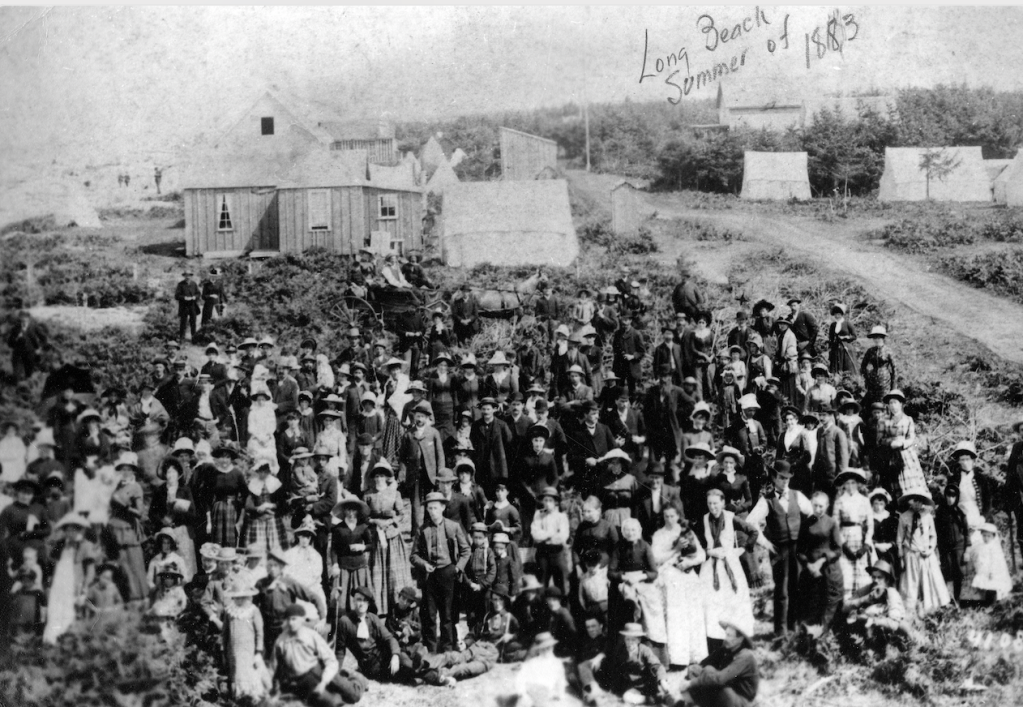Saints or Sinners? Characters of Pacific County: Young wandering entrepreneur founds Long Beach
Published 8:10 am Thursday, May 30, 2024

- Espy Family ArchiveHenry Harrison Tinker’s, “Tinkerville” — at first a tent city — became hugely popular with Portland residents when the Ilwaco Railroad was built in 1889. Transportation by side-wheeler down the Columbia River and north by rail to the “long beach” led to the establishment of substantial vacation homes and resulted, eventually, in the incorporation of the City of Long Beach in 1922.
Henry Harrison Tinker (1839-1924)
Like many young men before him, Henry Harrison Tinker followed in his family’s footsteps business-wise, though his feet took him clear across the continent from his roots. He was born in Ellsworth, Maine where his family were in the resort business and though it would be many miles and years in the distance, Henry would eventually begin a resort of his own.
As a young man of 19, he hired on as a guard for a wagon train headed for the gold fields of California. However, Lady Luck did not look kindly upon him so, for a while, he earned money by running a restaurant and then headed north to Oregon Country. He eventually settled in Clatskanie, some 35 miles upriver from Astoria.
According to the family story, Tinker was taking the mailboat downriver when Frank Canaris suggested they stop at Marshland for a drink of water at the home of the local minister, Reverend Bryant. There, Tinker met Nancy Bryant who became his wife three years later. It would be several more years and an attempt at managing a timber claim in the Nehalem Valley before Tinker decided to look for a homesite on the coast for his young family.
On Nov. 1, 1880, Tinker purchased one square mile of sandy swamp, bordering an unbroken 21-mile-long “weather beach” on the Pacific Ocean. It was Tinker’s dream to develop a resort on his property that would attract travelers year around. To this end he laid out lots and blocks (with park areas reserved for picnics and other lots where horses could be tethered while their riders went to the beach). He named the streets, started the process of filling lowlands, and advertised the availability of lots in “Tinker’s Addition to Long Beach” in Portland newspapers.
At first, house lots sold for a dollar each, with the lucky owners selected from numbers drawn out of a hat. Camping tents, summer cottages, and commercial ventures popped up everywhere. In about 1882, Tinker built a hotel in the center of town — an imposing white building of 40 rooms. It burned in 1896, but was rebuilt and stood for 67 years before being razed in November 1963.
Residents and visitors called the resort “Tinkerville” for many years but, eventually, residents decided their growing town needed a more formal name. By popular decision, it became known as Long Beach, which was recognized by the Post Office Department on Jan. 25, 1887. At first mail was transported along the beach in horse-drawn coaches but was soon replaced by railway mail service. The depot was only a short distance from the post office so the postmaster would drag the mail sacks from the office to the trains.
The purchase price for Henry’s resort town had been $1,000, payable to Charles S. Reed, clerk of Pacific County. Henry made a down payment of $300. Years later, Tinker’s granddaughter Lolita Morris said, “Because there were no banks and few safes in the county at that time, the commissioners were glad to handle the loan. Over the years, the deal was lost track of and did not come to final settlement until after Long Beach had become a considerable tourist town.”
Henry Tinker’s son Gilbert finally cleared the account in 1922 to satisfy the requirements of title insurance when Long Beach was incorporated. It was also Gilbert Tinker who served as the town’s first mayor — in true Tinker Resort tradition!









